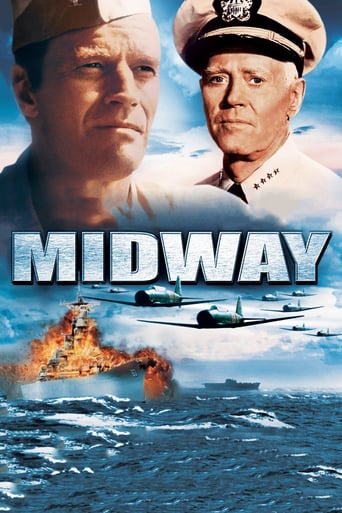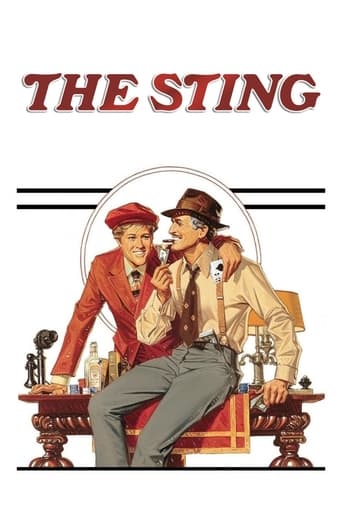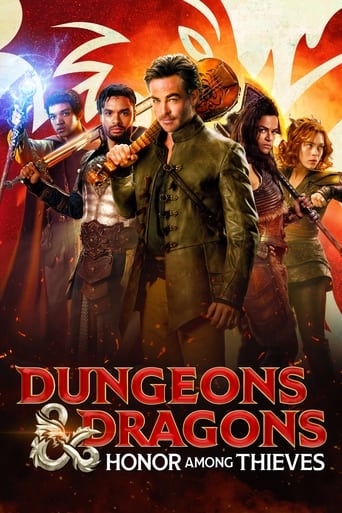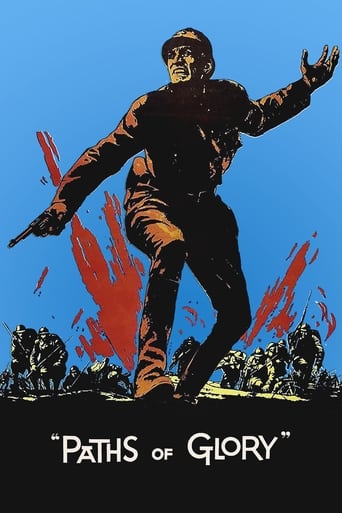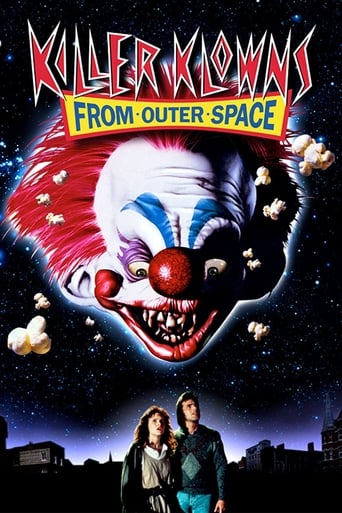


Fat Man and Little Boy
Assigned to oversee the development of the atomic bomb, Gen. Leslie Groves is a stern military man determined to have the project go according to plan. He selects J. Robert Oppenheimer as the key scientist on the top-secret operation, but the two men clash fiercely on a number of issues. Despite their frequent conflicts, Groves and Oppenheimer ultimately push ahead with two bomb designs — the bigger "Fat Man" and the more streamlined "Little Boy."
-
- Cast:
- Paul Newman , Dwight Schultz , Bonnie Bedelia , John Cusack , Laura Dern , John C. McGinley , Natasha Richardson


Similar titles
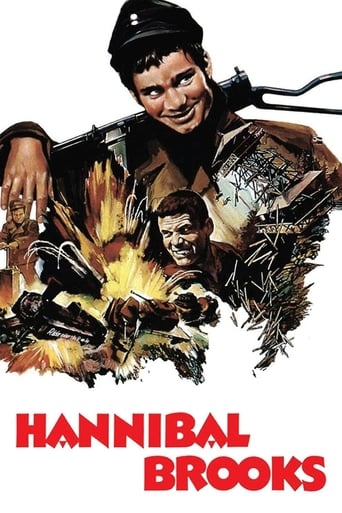

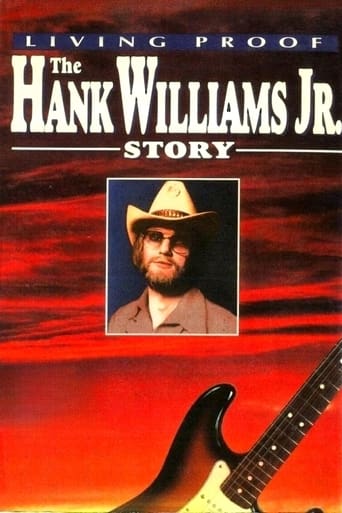
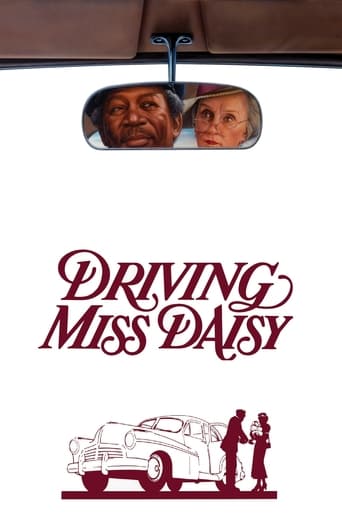

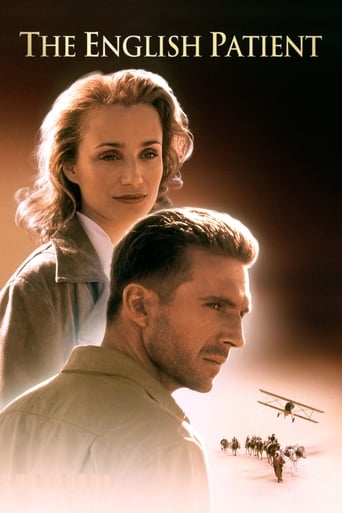


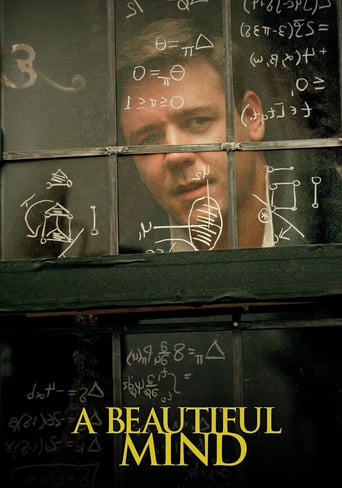

Reviews
Touches You
This is a coming of age storyline that you've seen in one form or another for decades. It takes a truly unique voice to make yet another one worth watching.
There's no way I can possibly love it entirely but I just think its ridiculously bad, but enjoyable at the same time.
The movie's not perfect, but it sticks the landing of its message. It was engaging - thrilling at times - and I personally thought it was a great time.
Fat Man & Little Boy plays like the Cliff's Notes version of an important period in history and science. The first moment we see a carefree, laughing Oppenheimer, it is obvious that the film is going to take quite a few liberties with characterization. When Paul Newman strides onto the scene, accompanied by "Patton"-like music, all credibility is immediately destroyed. My major problem with Fat Man & Little Boy is the character of Oppenheimer. Oppenheimer was a complex character, a misfit, a neurasthenic polymath. This film only scratches the surface of his personality, and the actor who plays him is horribly miscast, although he tries his best. Towards the final days of the Project, Oppenheimer had become extremely thin and cadaverous. The constant hounding by Communist hunters digging into his personal life coupled with his moral qualms about the use of the Bomb threw him into a state of nervous exhaustion bordering on paranoia. There is no hint of the inner man in this portrayal. The community of physicists at Los Alamos was a collection of brilliant and unusual men. There were many conflicts and a lot of competition going on which are pretty much ignored. It was frustrating to see all of this potentially rich material cast aside in order to simplify the film and make it accessible. In addition to ignoring the real characters involved in the Manhattan Project and misinterpreting the ones it treats, the film introduces John Cusak as the "Everyman Physicist," a fictional character created to humanize(?)the subject and engage the "average viewer," along with the obligatory love interest. This slows the movie down to a crawl and it was walking pretty slowly to begin with. This movie takes a situation rich in drama and conflict coupled with scientific and historical interest and turns it into a boring, simplistic soap opera.
If you know anything about the Manhattan Project, you will find "Fat Man and Little Boy" at least an interesting depiction of the events surrounding that story. The film is in all ways a very realistic portrayal of these events, and in many ways it is almost too real (such as some scenes involving radiation poisoning). Paul Newman, as usual, is brilliant in his role and always manages to come off like a real person on the screen. The supporting cast, such as John Cusack, Laura Dern, Bonnie Bedelia, and Natasha Richardson, is fairly good as well. This film is not, however, one of the best examples of turning a true story into a movie. Great films are able to take a true story and use just enough artistic license to keep its audience engaged for the entire movie. This one, however, tends to drag a bit throughout, and some scenes (such as John Cusack and Natasha Richardson's love story) could have been eliminated entirely without causing the film to lose much. Nevertheless, there are enough interesting facts and tiny humorous bits to at least keep the audience interested enough to see the entire film. It does not always entertain, but as far as great depictions go, this is very accurate, fascinating, and will leave the audience with something to think about.*** out of ****
I find it remarkable that so little was actually done with the story of the a-bomb and it's development for decades after the Manhattan Project was completed. My suspicion is that this was due to serious fears in the movie and entertainment industries (in the 1950s through the 1970s) with "McCarthyism" and related national security phobias (including the Hollywood blacklist). There was one film in the 1950s (with Robert Taylor) about Col. Paul Tibbits who flew the Enola Gay in the Hiroshima bombing, but otherwise nothing else. One could glance at a side issue tragedy (the sinking of the U.S.S. Indianapolis soon after the delivery of the bombs to Tinian) in Robert Shaw's description of the shark attacks on the survivors in JAWS. But the actual trials and tribulations of Groves, Oppenheimer, and their team was not considered film-able.And then in 1989 two films appeared. I have reviewed one already (DAY ONE) which I feel is the better of the two in discussing the lengthy technical and emotional and political problems in the Manhattan Project. The acting of Brian Dennehy as General Groves and David Strahairn as Oppenheimer was first rate and neatly balanced. Small side vignettes concerning the anti-bomb crusade of Szilard (Michael Tucker) help fill out the story well.That's the problem here. Paul Newman is a great actor (as is Mr. Dennehy) but Newman approached Groves in a different way that while not dreadful is lesser than Dennehy's intelligent but soft spoken military brass. Newman seems too popped eyed about the possibility of the weapon as the biggest stick to confront the other boys in the after-school yard with. Yes it certainly was, but the real Groves would have been more like Dennehy keeping his mind not on that great toy of the future but on the business of creating that great toy. Dwight Schultz's performance as Oppeheimer helps maintain the film's basically interesting and good production, aided by Bonnie Bedelia as his wife. But the most interesting aspect of this film is in the upgrading of the two tragedies of Daghlian and Slotin, in particular the latter, in the character of John Cusack's Merriman. Inevitably in all technological advances people are killed. It's just that these two tragedies (on top of the tens of thousands that were lost in Hiroshima and Nagasaki) brought home the dangers of the new unleashed power even in a so-called peaceful, controlled experiment. The two tragedies (particularly Louis Slotin's slow, agonizing death by radiation poisoning) showed how much care was needed in using atomic power - and how the barest of chances could still cause disaster. The only really different thing I saw in Cusack's performance (and the script) and the actual incident with Slotin was that Slotin actually took some time after the accident to figure out where all his fellow research scientists were when they were hit by the radiation from the accident (he was able to show that only he got the full effect of the accidental blast, so that only relatively minor treatment would be needed by the others). Perhaps the full story of Slotin's actions was too technical for the screen, but given the humongous pain he suffered in the end that he took time off to think of the others shows what a first rate person he really was.
I've read just about every major book about the Manhattan Project. Most people know what it was, but few people understand the depth and breadth of the project. Its scope was immeasurably massive -- rivaled in US history perhaps only by the space program of the 1960's.There were -- literally -- MILLIONS of people involved from all walks of life at numerous sites (most clandestine) around the country, each involved in a specific and different aspect of the project that they couldn't talk about to the person sitting in the cubicle next to them, much less their family. The logistics are overwhelming, particularly given the considerations of wartime communication, security and transportation in the 1940's.As an example -- my colleague's father was a carpenter who worked for one of the companies that had a contract with the federal government for the Manhattan Project. His job was to supervise a crew of about 30 other carpenters, who were responsible for manufacturing forms for the pouring of concrete for the massive research installations at Hanford, Washington. That's "all" he did, six days a week for nearly two years. These carpenters needed food, housing, sanitary facilities, hospitals and materials just as much as did Oppenheimer and his crowd at the top of the pyramid. Just think about it! That being said, it's simply impossible to do the subject justice in a 2-hour movie. In defense of Joffe, however, I would say that they had an impossible task, particularly since he chose to have a diverse screenplay with multiple plots, multiple angles, and multiple characters. What, exactly, was he thinking, and how could he be so arrogant to think that this would work? That's Hollywood, I guess.FAT MAN AND LITTLE BOY has so many flaws that it would take a book to list them all. Horrible casting. Dreadful (and politically-motivated) writing. Bad science. The portrayals of Groves and Oppie are particularly inaccurate and downright galling. Notwithstanding the screenplay's all-too-obvious agenda, it is STILL incredibly bland and sloppy.These flaws have been listed elsewhere on IMDb, but I was particularly struck by the fact that the scientists had so much time on their hands -- softball, horseback riding, parties, semi-formal dinners, ballet, etc., not to mention romance, and of course circulating political petitions. According to FM&LB, if these great brains had gotten off their duffs and actually spent some time in the lab instead of seducing Laura Dern, we might have won the war before D-Day.One final gripe -- FM&LB mentions that "Fat Man" and "Little Boy" were the code names of the two atomic bombs, but it doesn't mention that these names were a semi-good-natured jab at Groves ("Fat Man", for heavy stature) and Oppenheimer ("Little Boy," for his slight stature). Another reason Paul Newman should not have been in this movie...

